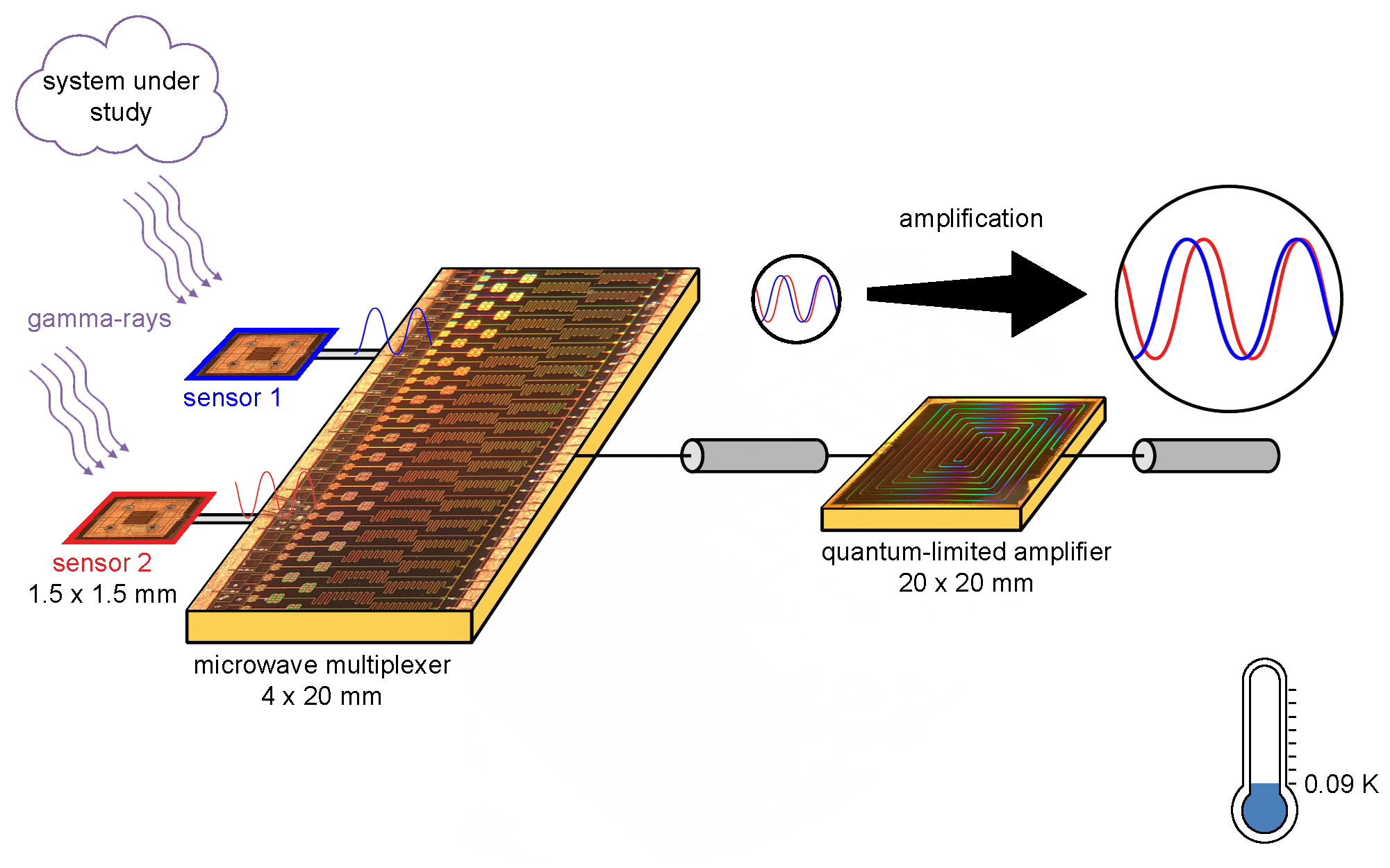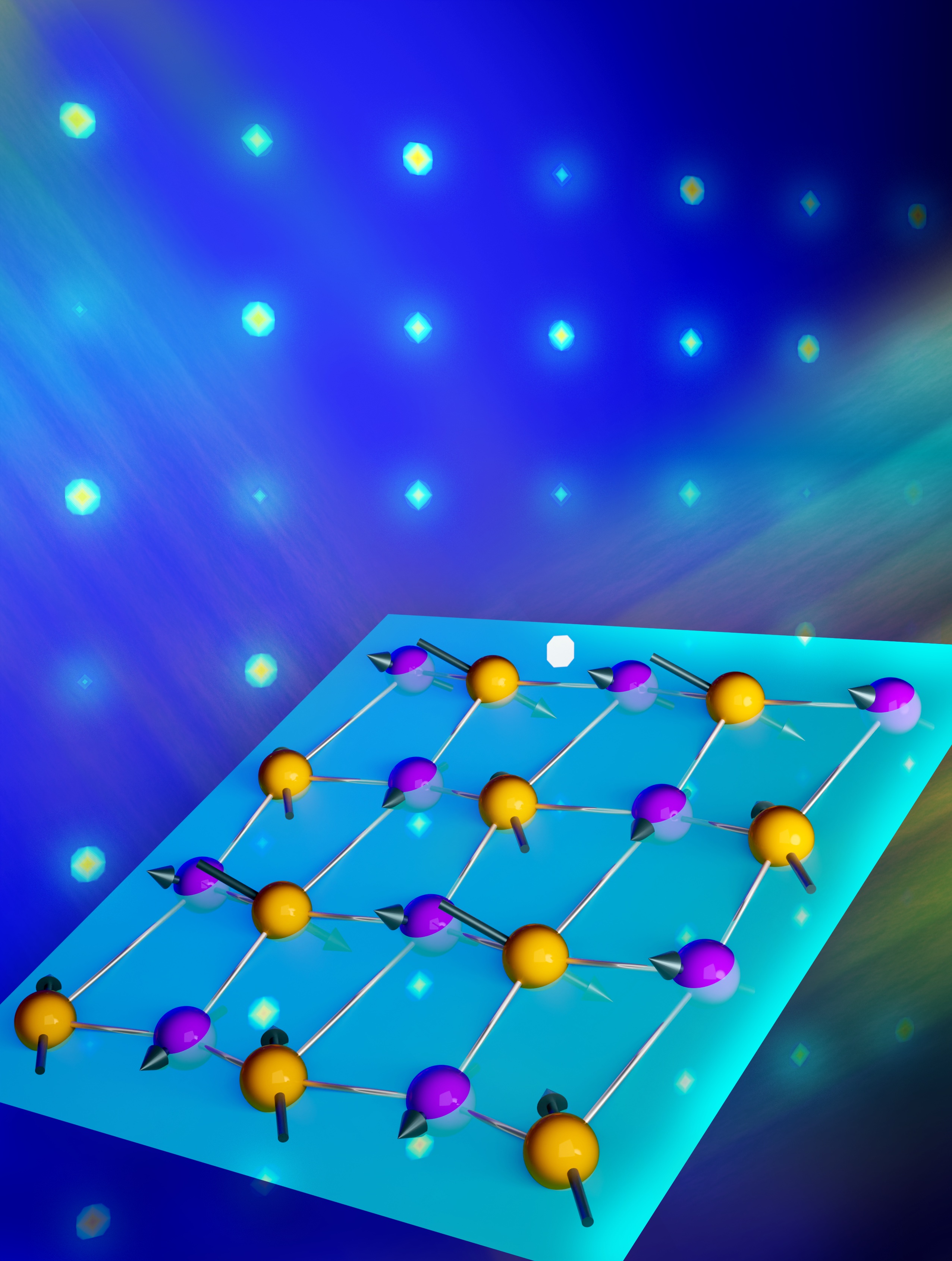Scientists Amplify Superconducting Sensor Arrays Signals Near the Quantum Limit
New tools borrowed from quantum computing will improve the detection of X-rays and gamma-rays.

The Science
Understanding how energy moves in materials is fundamental to the study of quantum phenomena, catalytic reactions, and complex proteins. Measuring how energy moves involves shining special X-ray light onto a sample to start a reaction. Detectors then collect the radiation the reaction emits. Conventional sensors usually lack the sensitivity needed for these studies. One solution is to use superconducting sensors. But amplifying the signals from these sensors is a major challenge. Building on advances from quantum computing, researchers added a special type of amplifiers, superconducting traveling-wave parametric amplifiers. While most amplifiers add noise to the measurement, these amplifiers are almost noiseless. In a major advance, researchers recently showed that the amplifiers can operate at 4 Kelvin, which is considered relatively high operating temperatures.
The Impact
Reducing the noise that is added during signal processing can improve a sensor’s performance. Amplification allows each sensor to operate faster and be more sensitive. Recent experiments have shown that parametric amplifiers can potentially analyze signals from many superconducting sensors at the same time. Superconducting sensors work at very low temperatures. At these temperatures, parametric amplifiers have very good noise performance, close to the limit of quantum mechanics. The advance paves the way to integrate such amplifiers with a variety of sensor technologies.
Summary
A superconducting sensor consists of a superconducting thermometer and an absorber. When X-rays are stopped in the absorber, they change the superconducting state of the sensor. This generates a small current in an electrical circuit. To make the detector more sensitive, many sensors are arranged into an array, like in a digital camera. Superconducting sensors operate at very cold temperatures (approximately 0.09 Kelvin), so they require specialized readout electronics and amplifiers. These amplifiers need to combine the signals from multiple sensors on a single readout line. Combining signals is known as multiplexing. One efficient way to do this is to couple each sensor in an array to a resonator. All of the resonators are coupled to a single output line. The current produced by an absorbed photon shifts the resonant frequency in a unique way for each sensor.
Because these resonators work in microwave frequencies, the electronic chip that contains all the resonators as well as the output feedline is called the microwave multiplexer. Researchers are preparing to measure the signals from an array of sensors and a microwave multiplexer with a readout chain whose first amplifier is a kinetic-inductance traveling-wave parametric amplifier instead of a conventional semiconductor amplifier. Using the parametric amplifier will reduce readout noise and enable larger arrays of faster sensors.
Contact
Maxime Malnou
National Institute of Standards and Technology
maxime.malnou@nist.gov
Funding
This work was funded by the Department of Energy Office of Science, Basic Energy Sciences Accelerator and Detector Research Program, the National Institute of Standards and Technology’s Innovations in Measurement Science Program, and NASA.
Publications
Malnou, M., et al., Three-Wave Mixing Kinetic Inductance Traveling-Wave Amplifier with Near-Quantum-Limited Noise Performance. PRX Quantum 2, 010302 (2021) [DOI:10.1103/PRXQuantum.2.010302]
Malnou, M., et al., Performance of a Kinetic Inductance Traveling-Wave Parametric Amplifier at 4 Kelvin: Toward an Alternative to Semiconductor Amplifiers. Physical Review Applied 17, 044009 (2022). [DOI: 10.1103/PhysRevApplied.17.044009]
Highlight Categories
Performer: University
Additional: Collaborations , Non-DOE Interagency Collaboration



